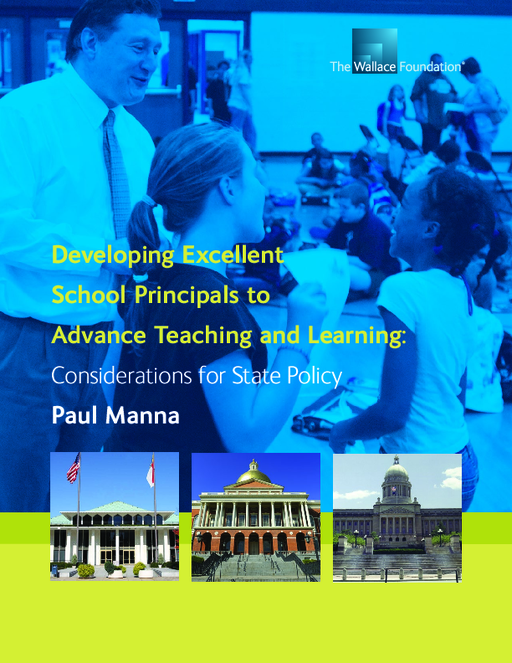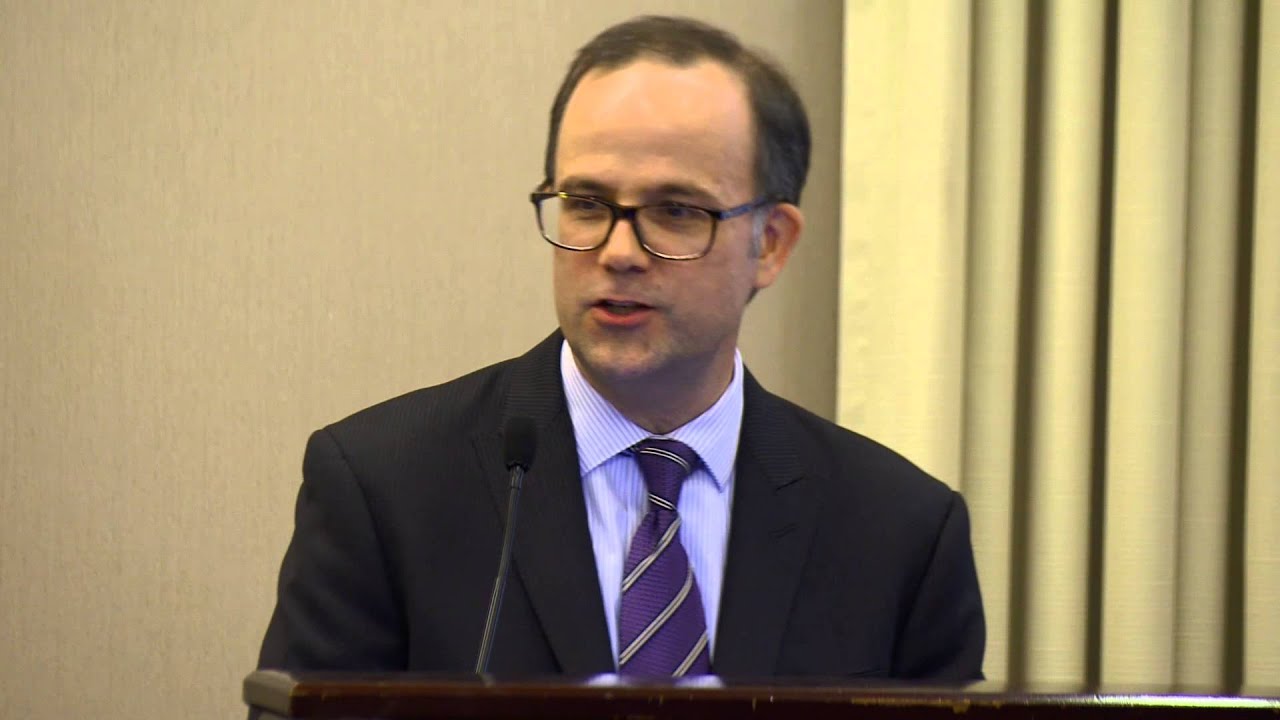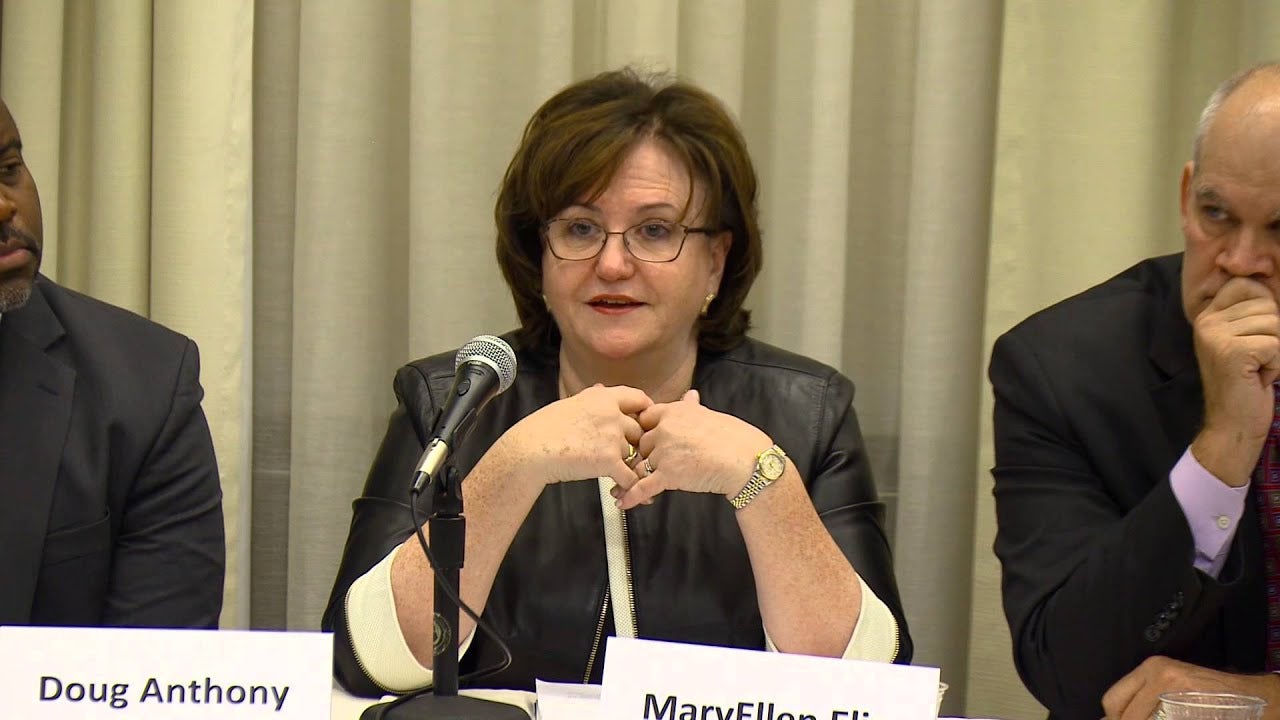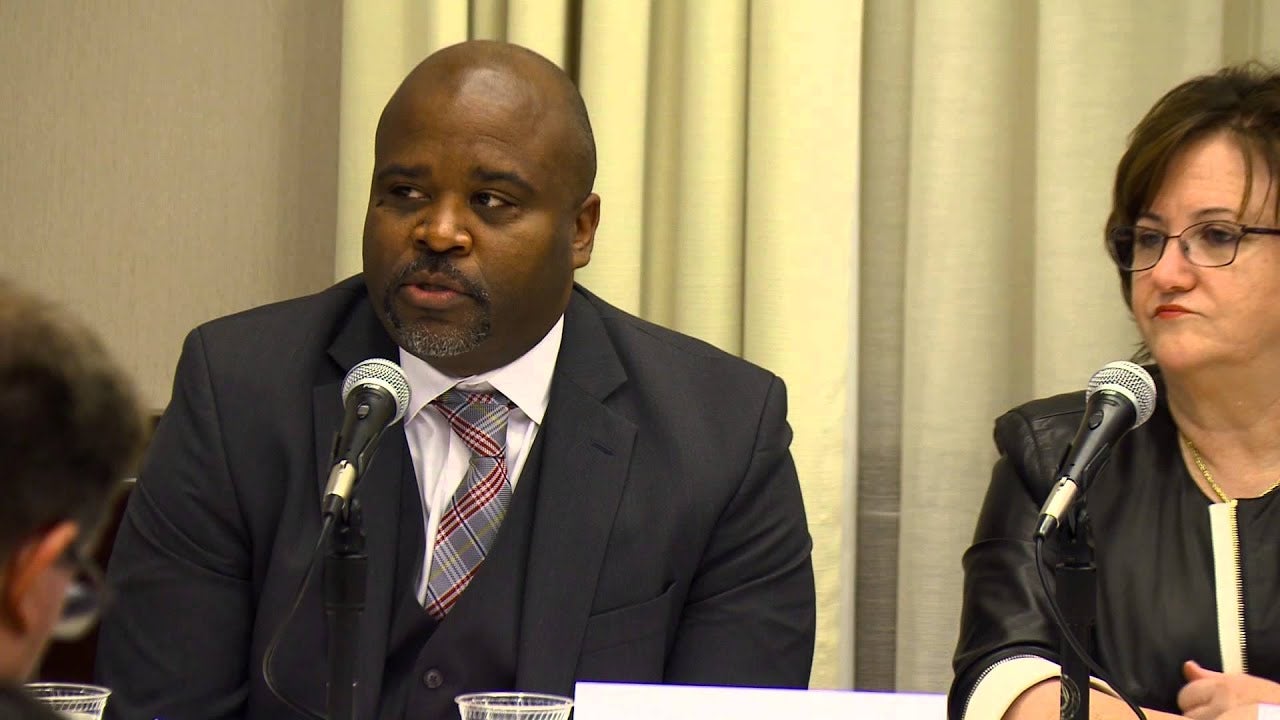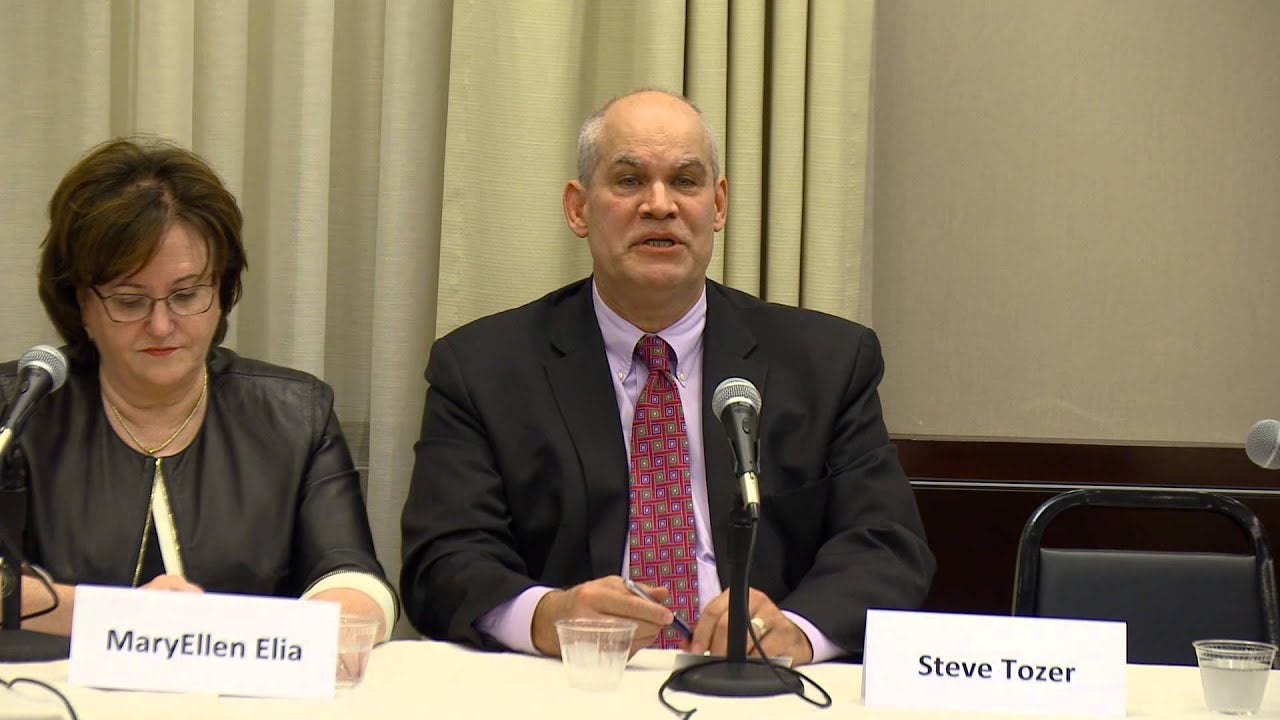Breadcrumb
- Wallace
- Reports
- Developing Excellent School Prin...
Developing Excellent School Principals to Advance Teaching and Learning
Considerations for State Policy

- Author(s)
- Paul Manna
- Publisher(s)
- The Wallace Foundation
Summary
How we did this
The research for the report included personal interviews with 21 experts in in state policy and school leadership; an email survey of those likely to have expertise in education leadership (351 responses); an analysis of Schools and Staffing Survey (SASS) data regarding principal training, principal influence over different school activities, professional development for principals, and principal evaluation; an examination of Education Week coverage of state policy and principals; and an analysis of reports from The Wallace Foundation on the sustainability of various foundation efforts over the years to strengthen school leadership.
Principals are crucial to schools’ success. But to date it’s been unclear how state policymakers can improve the quality of principals statewide.
This report by political scientist Paul Manna aims to fill that gap. It draws on the experience of states that have focused on developing stronger principal policy. Manna offers guidance in the form of three steps for those who want to take action.
Assess the principal’s current status on the list of state priorities. Manna found that principals are typically low on state education policy agendas. Teachers often rank higher. A trend towards sharing leadership among school staff has also shifted focus away from principal leadership, he says.
Yet research clearly supports the key role principals play in helping their schools succeed. This includes creating productive school cultures and guiding improvements in teaching.
- Examine six levers that states can pull. States have formal and informal powers to improve the principalship. Manna describes these powers, which fall into six categories:
- Adopting principal leadership standards
- Recruiting aspiring principals into the profession
- Approving and overseeing principal preparation programs
- Licensing new and veteran principals
- Supporting principals’ growth with professional development
- Evaluating principals
- Assess state and local contexts. All states have the same policy and practice levers available to them to improve school leadership. But state and local context influences which levers will be most effective. Manna describes four contexts that states especially need to consider:
- The state education governance context. This includes state government organizations and actors. They can create roadblocks to action. They can also be partners in innovation.
- The diversity of locations. Districts in urban, suburban, and rural communities have different needs and challenges. So do schools serving different racial and ethnic groups or income levels. Voices from diverse locations need to be included in policy discussions about improving principal quality.
- State and local capacity to implement new policies. States need to see whether their policy goals can reasonably be carried out by state and local agencies. States can also identify partners outside government to help fill gaps.
- Principals’ perspectives. State leaders need to understand how policies will affect tasks principals need to complete each day. Policies may create conflicting demands on principals’ time. Some less important responsibilities for principals may need to be removed.
The report emphasizes that every state faces a unique blend of educational, political, and financial circumstances. As a result, each state’s approach should fit its particular needs. But the steps above are ones that any state could take to begin improving the principalship.

This report encourages state leaders to envision their principals as invaluable multipliers of effective teaching and learning in the nation’s schools.
Key Takeaways
- This report draws on the experience of states that have focused on developing more effective principals. It offers guidance for those who want to improve state policy and practice.
- States should review their priorities to see where improving principal quality ranks. Research finds that principals have a singular influence on student learning. Yet principals typically rank lower than teachers on state education policy agendas.
- States have formal and informal powers to improve the principalship. The report describes six levers states can pull to improve principal quality. They are: principal leadership standards, oversight of principal preparation programs, principal licensure, and principal recruitment, professional development, and evaluation.
- State and local contexts influence which policy levers will be most effective. States need to consider local and state capacity for certain actions. They also need to gather perspectives from diverse stakeholders. These include actors at the state level, principals, and districts in a variety of locations serving different student populations.
Materials & Downloads
Hear from the Experts
State Policy to Develop Excellent Principals: A Washington Briefing
Paul Manna, author of a major Wallace Foundation report on considerations for state policymakers seeking to improve school leadership, discusses state policy and the principalship with other educators.
